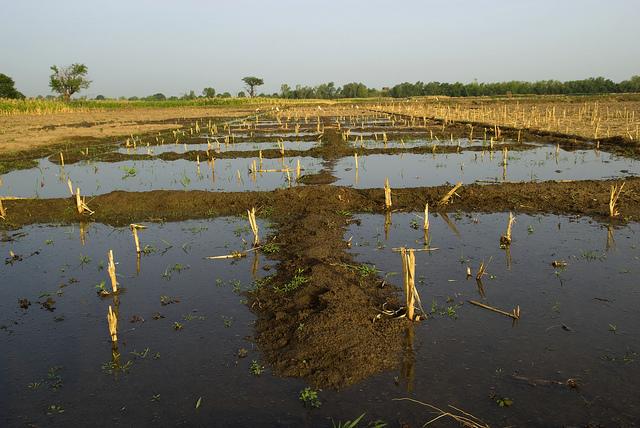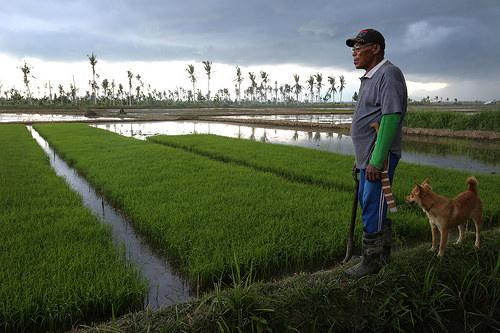GIIF's Senior Technical Specialist shares key lessons from projects in Africa
Hybrid
You are here

Topics:
Country:
As Rwandan farmers face increasingly erratic rainfall, an innovative program launched today will use automated weather stations to offer 20,000 farmers in the Southern and Western provinces of Rwanda low-cost insurance to protect their loans for high-yielding seeds, fertilizers, and other farm inputs.

Country:
PlaNet Guarantee, member of the PlaNet Finance Group, and the GIIF come together to launch the first regional management platform for index insurance. The objective is to cover 60 000 farmers in West Africa by 2015. While agriculture remains the main economic sector in West Africa (on average 30% of the GDP of countries in the region and 70% of the workforce), no risk management tool is offered to farmers to secure their income. In case of drought, floods, or due to other factors that could cause a significant drop in yields, farmers currently receive no form of protection. The traditional...
Country:
Region:
The Syngenta Foundation’s Kilimo Salama weather index insurance program has taken off in Kenya and has recently expanded to Rwanda and Tanzania. Beginning in 2009 with a pilot project offering index insurance to 200 farmers, at last count 51,000 farmers in Kenya and 14,000 farmers in Rwanda have the insurance. In 2011, Kilimo Salama’s partner UAP Insurance collected KSh 19 million in premium payments, and premium revenue has nearly doubled to KSh 33 million in just the first six months of 2012. These premium volumes are approaching levels than can make index insurance economically sustainable...

Topics:
Country:
IFC, a member of the World Bank Group through its Global Index Insurance Facility (GIIF), has entered into a project agreement with SANASA Insurance Company Ltd, to support the development and use of flexible and affordable weather index insurance products to help minimize the impact of crop losses due to floods or droughts on farmer livelihoods. The project objective is to expand access to insurance for food crops such as rice and in turn offer protection for up to 15,000 small-scale farmers against weather-related risks and natural disasters. The project will also raise awareness amongst 50...

Country:
* World Bank announces $1.7 million funding for program * Designed to insure against hurricanes like Sandy in 2012 By Susana Ferreira PORT-AU-PRINCE, Haiti, Jan 29 (Reuters) - When Hurricane Sandy struck Haiti late last year, the home Guerda Pierre shares with her three children and mother in Cabaret, north of Port-au-Prince, was flooded - and so was the merchandise she sold to make a living. "The books, the food, everything was wet after Sandy," said Pierre. The plantain plants and beans in her garden were also destroyed. But unlike the majority of Haitians, Pierre had an insurance policy.
Fifty-five year old Niyitegeka Veneranda lives in rural Rwanda. She and her husband are parents to seven children and grandparents to five. They farm less than a hectare of their own land, yet she has been able to build a small house, feed her family, and send her last three children to school. She expanded her rice production recently with a loan from a local bank made possible through agricultural insurance, and plans to expand her acreage with another loan next year.
Start date:
2011
Country:
Region:
Argentina’s agriculture sector is very vulnerable to weather risks. For instance, cotton in the Chaco Province - the most important cotton producing area in Argentina and the third poorest province - is very exposed to drought, excess rainfall and pests. Similarly, cattle-rearing in southwest Buenos Aires Province is very exposed to droughts which impact severely on pasture production.
Start date:
2011
Topics:
Country:
Region:
Agricultural insurance was introduced in Nigeria in 1987 through the creation of the Nigerian Agricultural Insurance Scheme (NAIS). In 1993, the private company in charge of underwriting and implementing the NAIS was dissolved and replaced by a public-sector corporation, the Nigerian Agricultural Insurance Corporation, NAIC. Currently, NAIC writes a portfolio of crop, forestry, livestock, poultry and aquaculture insurance and also non-life commercial insurance lines. NAIC has received government support both in the form of the initial capitalization of the company and 50% premium subsidies on...
Start date:
2012
Country:
Region:
Benin is a small country with a population estimated at just under 10 million in 2011, and the national economy relies on the agriculture sector, in particular on cotton. Indeed, the agriculture sector accounts for about 32% of GDP and is the source of livelihood for nearly 70% of the country’s workforce. As part of its Growth and Poverty Reduction Strategy (2011-2015), Benin has identified agricultural diversification and improved agricultural productivity as two key priorities.

